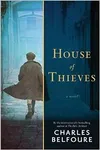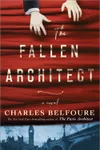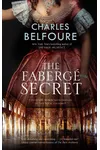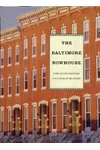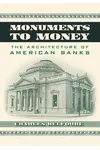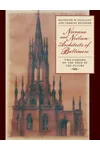Picture an architect-turned-storyteller who weaves history and design into gripping tales—meet Charles Belfoure! This Westminster, Maryland, native blends his expertise in historic preservation with historical fiction, crafting novels like The Paris Architect that transport readers to wartime Paris and Gilded Age New York. Belfoure’s knack for merging architectural detail with human drama makes his stories both thrilling and immersive.
With no formal creative writing training, Belfoure leaned on his architectural background to carve a unique niche in literature. His novels, rich with historical context, explore moral dilemmas and resilience, earning him a spot on the New York Times bestseller list. Ready to step into his world of blueprints and bravery?
The Making of Charles Belfoure
Born on February 19, 1954, in Baltimore, Maryland, Charles Belfoure grew up in the Woodlawn suburbs, the son of a U.S. Navy yeoman and a Polish immigrant translator. His path to writing was anything but conventional. After earning a Bachelor’s in Architecture from the Pratt Institute in 1983 and a Master’s in Real Estate Development from Columbia University in 1993, Belfoure became a specialist in historic preservation. He taught at Pratt and Goucher College, wrote for The New York Times and The Baltimore Sun, and penned architectural histories like Monuments to Money. Inspired by John Grisham’s use of legal expertise in fiction, Belfoure decided to channel his architectural knowledge into storytelling, debuting with The Paris Architect at age 59.
Charles Belfoure’s Unforgettable Stories
Belfoure’s novels stand out for their vivid historical settings and architect protagonists facing high-stakes moral choices. His debut, The Paris Architect (2013), follows Lucien Bernard, a French architect in Nazi-occupied Paris, designing hiding places for Jews. Praised by Malcolm Gladwell as a “beautiful and elegant account” of reluctant heroism, it hit the New York Times bestseller list and was a finalist for the 2015 International Dublin Literary Award. House of Thieves (2015) shifts to 1886 New York, where architect John Cross joins a criminal gang to save his son, blending Gilded Age opulence with gritty crime. Publishers Weekly called it “evocative” for its seamless historical detail.
The Fallen Architect (2018) dives into Edwardian England, unraveling a mystery around a disgraced architect after a theater collapse. His latest, The Fabergé Secret (2021), explores a Russian prince’s awakening amid the 1903 Kishinev pogrom. Belfoure’s style—crisp, immersive, and layered with architectural insights—draws comparisons to Ken Follett, with themes of redemption and resilience shining through. His meticulous research and love for historical eras make each novel a time machine for readers.
Why Charles Belfoure Matters
Charles Belfoure’s impact lies in his ability to humanize history through architecture. By placing architects at the heart of his stories, he illuminates how design shapes lives amid war, crime, or injustice. His novels resonate with readers who crave historical fiction that’s both intellectually rich and emotionally gripping. Belfoure’s late start in fiction proves it’s never too late to reinvent oneself, inspiring aspiring writers to draw from their unique expertise. His work, translated into multiple languages, continues to captivate global audiences.
- Born: February 19, 1954, Baltimore, Maryland
- Key Works: The Paris Architect, House of Thieves, The Fallen Architect, The Fabergé Secret
- Awards: Finalist, 2015 International Dublin Literary Award; 2019 Nero Award Finalist
- Fun Fact: Belfoure’s architectural histories won grants from the Graham Foundation.
Snag The Paris Architect and dive into Charles Belfoure’s thrilling blend of history and heroism!

